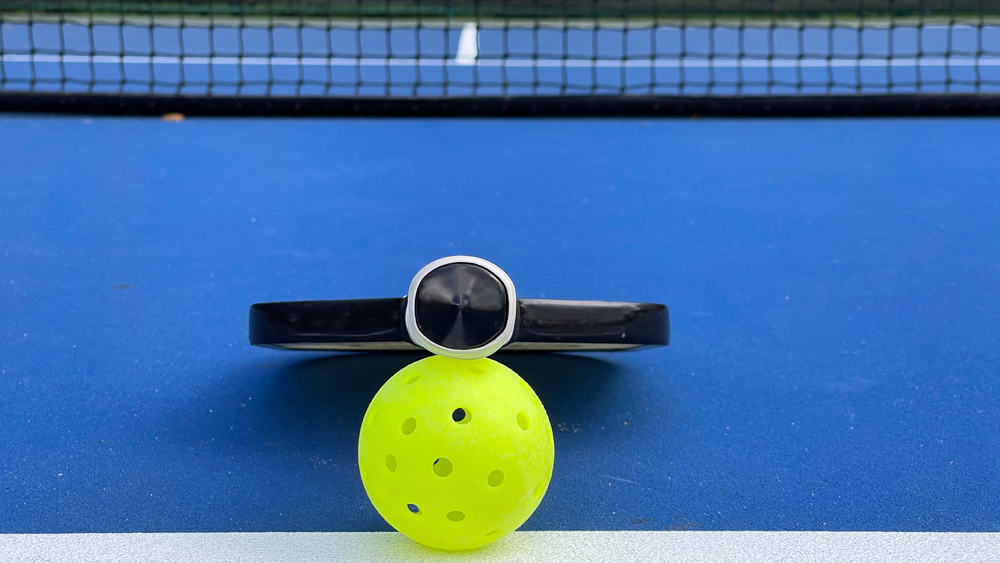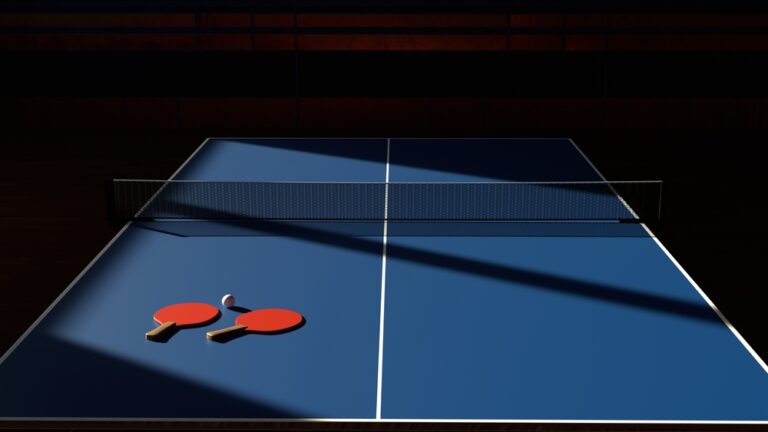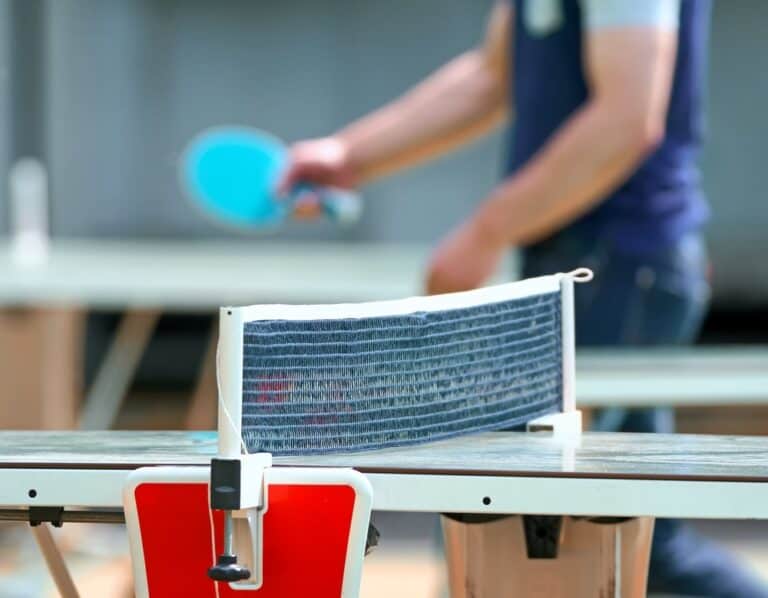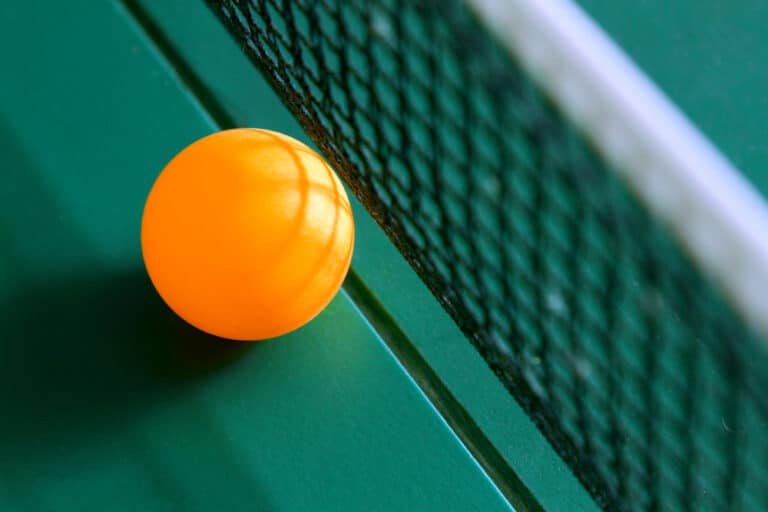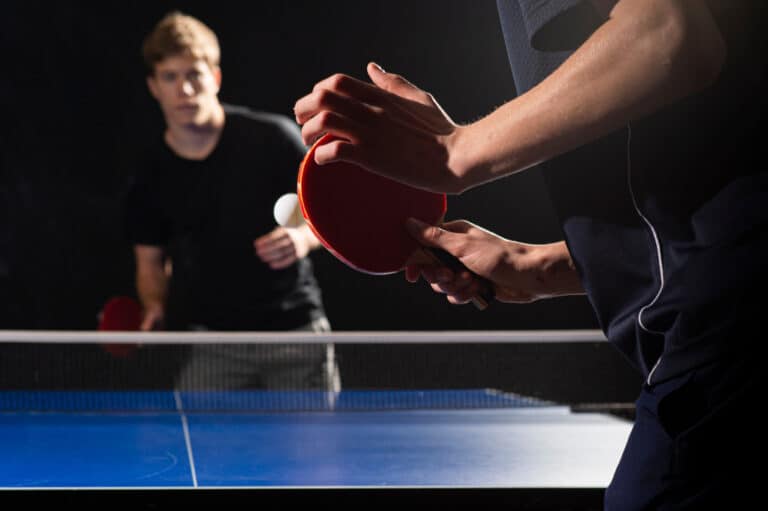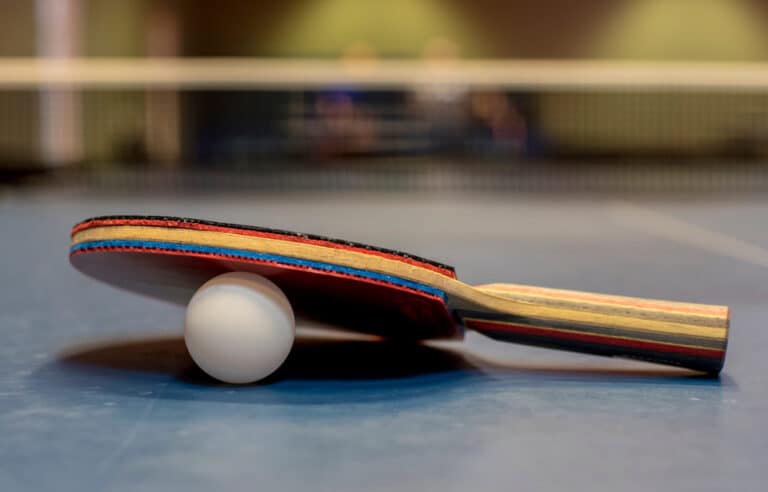What Pickleball Paddles Are Banned?
Playing pickleball, like other sports, can get complicated when you spend a lot of money on equipment like a paddle, just to realize that it’s not approved. We all want to be sure that we’re buying the best possible product. But how can we be sure before we buy? To make things slightly easier, let’s look at some of the pickleball paddles that have been banned and why it happened.
Pickleball paddles are banned from all professional matches if they do not conform to the USAPA’s standards. Within the list of approved paddles, some courts may also ban specific paddles depending on the requirements of the court itself. An example is a court banning paddles that are too noisy.
There have only been a handful of cases where pickleball paddles got banned entirely from professional matches since most manufacturers take care to meet the USA Pickleball Association (USAPA’s) requirements. But on a per-court basis, a few more paddles have been banned. Let’s evaluate the reasons why these paddles got banned so that you can avoid problems in the future.
Why Pickleball Paddles Get Banned
The USA Pickleball Association (USAPA) and the International Federation of Pickleball (IFP) put specific regulations in place to ensure that the sport of pickleball remains competitive and fair. This includes specific standards that all pickleball paddles must meet.
These standards do not apply to casual players. If you’re only playing for fun or only competing against friends and family, it makes no difference to the IFP or USAPA what paddle you use. But when you want to start competing in any formal or official tournaments, you must have a paddle that meets the official standards and requirements.
With that in mind, it makes sense for even casual players to use officially approved paddles rather than banned ones since it will ensure you get the best possible game from your paddle. If you ever decide to take your game further, you will already be used to proper gear.
So, what determines if a paddle is approved or banned?
The Paddle’s Core Must Be Made Of Approved Materials
When a manufacturer submits a paddle to the USAPA or IFP for approval, one of the things that these organizations test is the core material. They do this using a deflection test to see how much the pickleball bounces off the surface of the paddle, which indicates how rigid and compressible the paddle is.
The most commonly approved materials for a paddle’s core are polymers or polypropylene, Nomex (a material similar to very dense cardboard), and aluminum. Some of these materials perform better than others, but they are all approved and offer good performance in a paddle.
Other materials are not approved, and paddles that use these will be banned from professional pickleball tournaments. An example is compressed foam. Paddles with foam cores were previously approved since the foam offers good performance. Still, the USAPA later found that the cores degraded rather quickly, leading to these paddles getting banned by USAPA.
The Surface Must Not Have Too Much Texture
A rough texture and dents on the surface of a pickleball paddle add spin to the ball when you’re playing. Spin is an excellent factor since it means your shots are less predictable to your opponent, and some pickleball paddle manufacturers focus on adding a rough texture to the surface of their paddles specifically to increase the spin.
But too much spin is seen as unfair sportsmanship. The USAPA determined the maximum legal amount of spin that a paddle may add. Based on this, the organization also sets standards for how rough a paddle’s surface texture is allowed to be. All paddles that are submitted to USAPA for approval will be put through thorough roughness tests to see if they comply.
Any paddle that is found to have a surface that’s too rough or dented will be banned from all professional tournaments since too much spin will give the player an unfair advantage over their competitors.
The Paddle’s Design
This might seem slightly irrelevant, but the design on the surface of the paddle, including the paint used to create the design, must also conform to standards set by USAPA and the IFP. There are two main reasons for this.
Firstly, the design itself must not be offensive in any way. Some pickleball matches are broadcast on live television, but there are always spectators present on the court to watch the match. Offensive designs may cause the sport’s reputation to be sullied in some people’s eyes, and USAPA does not want that to happen.
Secondly, the paint used to make the design must not be too reflective. Reflective paint could cause glare in your opponent’s eyes, which would give you an unfair advantage. So any design printed or painted on the surface of the paddle must have a matte finish rather than a glossy one in order to minimize the amount of glare emitting from the paddle.
Any paddle with a design that could be offensive to some people or painted with shiny reflective paint will be banned from all professional pickleball tournaments.
The Paddle’s Size And Weight
Again, USAPA has strict guidelines about the size and weight of a pickleball paddle. For example, you can’t go on the court with a tennis racket.
To be approved by USAPA and the IFP, a pickleball paddle may not be longer than 17 inches. This means that even elongated paddles are limited to a maximum length of 17 inches. The paddle’s surface area must also be 24 inches or less, including the edge guard.
In terms of weight, the rules aren’t carved in stone. Ideally, a paddle should weigh between 7.5 and 8.5 oz, but a bit of variance is allowed here and there, which is why paddles are usually manufactured within the correct weight range, but players often add things like lead tape to increase the weight. It is not illegal to do this, and heavier paddles won’t be banned within reason.
Paddle Customization Must Be Limited
You are allowed to customize your paddle but within the limits set by USAPA. For example, you may add writing to your paddle’s surface as long as it doesn’t affect the roughness of the surface. You may also add tape to affect the grip, and you are allowed to change the paddle’s weight within reasonable bounds to add some more force to your swings.
Suppose any of your modifications or customizations affect the pickleball paddle in any way that is against the rules of USAPA and the IFP. In that case, they will ban your paddle from all official matches and tournaments. If you managed to get past inspection with an illegal paddle and the truth comes out later, you would be disqualified, and victories you had with that paddle will be scrapped.
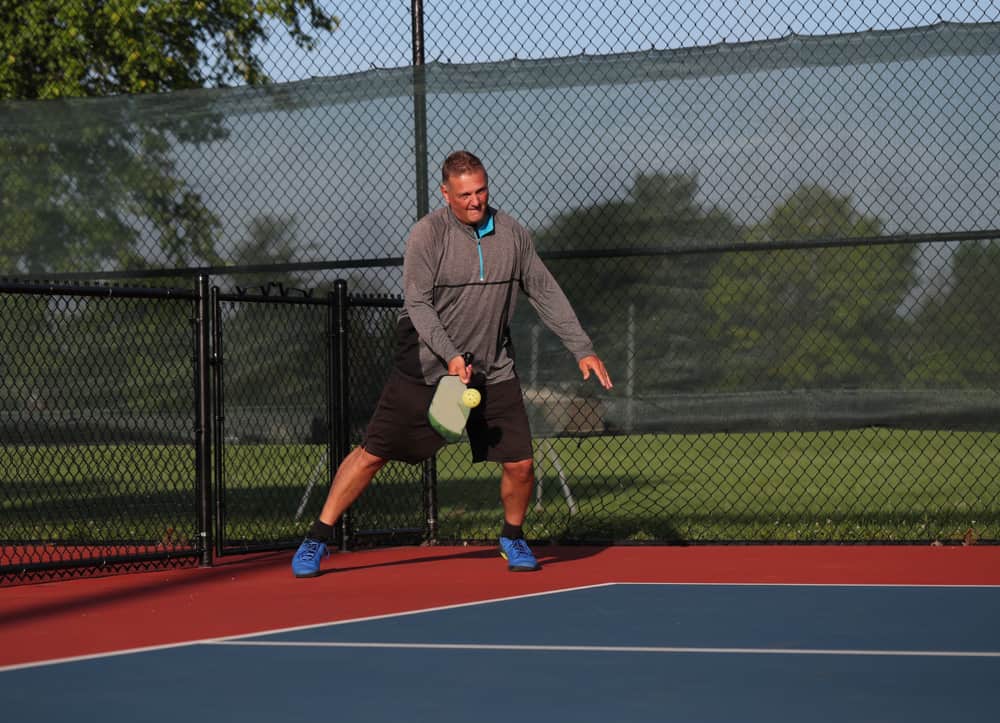
Court-Specific Paddle Bans
Not all bans are from the IFP or USAPA themselves. Sometimes you may buy a paddle that is ideally approved by both organizations, completely legal, and with only regulation modifications and customizations implemented, and still find out that your paddle is banned for specific matches.
That’s because some pickleball courts enforce specific rules in addition to those imposed by USAPA and the IFP. They will only allow paddles that conform to certain standards that are stricter than USAPA and IFP regulations, usually due to some particular feature of the court or a rule imposed by the area in which the court is located.
One notable example is the Sun City Grand pickleball club in Surprise, Arizona. Since many of the area’s residents are senior citizens and retired individuals, the level of noise created by high-energy sports like pickleball can quickly become too much for the residents to handle.
According to the local pickleball club, the residents understand that sports and entertainment are usually noisy events. Still, the club wants to limit the amount of noise to keep the area as quiet and peaceful as possible.
Pickleball has a distinct sound, just like tennis and table tennis, but the nature of the paddle and the materials it’s made of can make pickleball an even louder game. With that in mind, any paddles deemed too loud by the club’s management will be banned from being used on the courts at Sun City Grand.
A complete list of banned and allowed pickleball paddles is available on the club’s website at http://pball.grandpickleball.org/paddlerule.pdf. If your paddle is not on this list and you are unsure if it will be allowed, the default answer is “no.” Still, the club also uses the services of a professional company to test the decibels of noise generated by your paddle to see if it’s in the approved range.
That’s just one example. Before you play in any match, be sure to check the local clubs and courts to find out if they have any specifications regarding paddles that are allowed or banned on their courts. It’s always better to be prepared and avoid frustration and disappointment.
Which Pickleball Paddles Are Banned?
There are a few popular paddles that have been banned by the USA Pickleball Association in the past. This isn’t very common, but it happens occasionally. It’s especially bad when a brand that’s been approved before is suddenly banned for not conforming anymore, particularly just before a major tournament or competition, as recently happened with CRBN Pickleball.
CRBN Paddles
CRBN has been a famous and USAPA-approved manufacturer of pickleball paddles for a number of years. Many professional players use and even promote CRBN paddles, including big names like Darrian Young, Michelle Esquivel, Yana Grechkina, and Ben Newell. So, players were utterly shocked when USAPA suddenly banned CRBN paddles in the middle of the US Open in April 2022.
After being approved a year earlier, a re-test by USA Pickleball found the CRBN paddles to be non-compliant. Details aren’t very clear as neither CRBN nor USA Pickleball discussed it in any depth. What is clear, though, is that USA Pickleball received reports about the play characteristics of the CRBN paddles being inconsistent and deemed to be in violation of USAPA regulations.
USA Pickleball followed these reports up by conducting two sets of tests (first on-court with a CRBN representative present and then in a laboratory), all of which confirmed non-compliance, causing the CRBN paddles to be removed from the USAPA Approved list. CRBN accepted the results and immediately issued a notice to its customers that it’s recalling its paddles with immediate effect.
Being a small family-owned business, CRBN immediately started working on an alternative. Changes were made to its paddles, and a new model was released for USAPA testing and approval only a few weeks later.
The new model of CRBN paddles was approved by USAPA after the necessary tests were conducted, but unfortunately, it was too late for any players who wanted to use CRBN paddles in the US Open tournament. However, CRBN rose to the occasion spectacularly and offered its customers excellent options for future tournaments, and the support from players and retailers was notable.
Players who own banned CRBN pickleball paddles have the following options:
- To continue playing with their current (banned) paddle if they only play for recreational purposes. Players who choose this option must understand that they will not be able to participate in any official tournaments with this paddle. They will, however, qualify to get a $40 gift card to use towards the purchase of a future CRBN pickleball paddle.
- CRBN offers a membership plan called “CRBN Family” for $60. This will let you keep your old paddle and give you the new approved CRBN paddle for $60 (one-third of its retail price). Players also get sizeable discounts on other products from CRBN and partnered retailers.
- Players may swap their banned CRBN paddles for the new, approved paddle completely free of charge. They must provide proof of purchase and complete a form provided by CRBN, after which CRBN will pay for shipping both ways.
- Players that were forced to buy a new paddle for the US Open due to the CRBN ban may swap out the paddle that they bought (from a different brand) for a new approved CRBN paddle if they complete the form and provide proof of purchase. Again, CRBN will pay for shipping both ways.
The CRBN situation is an excellent example of a company handling a setback, like their products being banned, with class and style. Not only did CRBN keep most of its old customers, but the elegance with which the management handled the situation also won the company many new customers and supporters.
Conclusion
There are many banned pickleball paddles that are not allowed to be used in professional tournaments, but there are very few cases where a paddle gets banned after it’s been approved. CRBN was the most notable case since its paddle didn’t conform to the standards even after approval. Be sure to buy a well-known, recommended, and, most of all, approved brand.
References
- https://www.thedinkpickleball.com/the-ban-on-crbn-paddles/
- https://www.justpaddles.com/blog/post/crbn-paddles-banned-by-usa-pickleball/
- https://racquetsportscenter.com/illegal-pickleball-paddles/
- https://crbnpickleball.com/pages/usap
- http://pball.grandpickleball.org/paddlerule.pdf
- https://www.justpaddles.com/blog/post/pickleball-paddle-cores/
- https://pickleballeffect.com/other/a-pickleball-paddle-buyers-guide-how-to-pick-the-right-paddle-for-you/
- https://grandpickleball.org
- https://crbnpickleball.com

